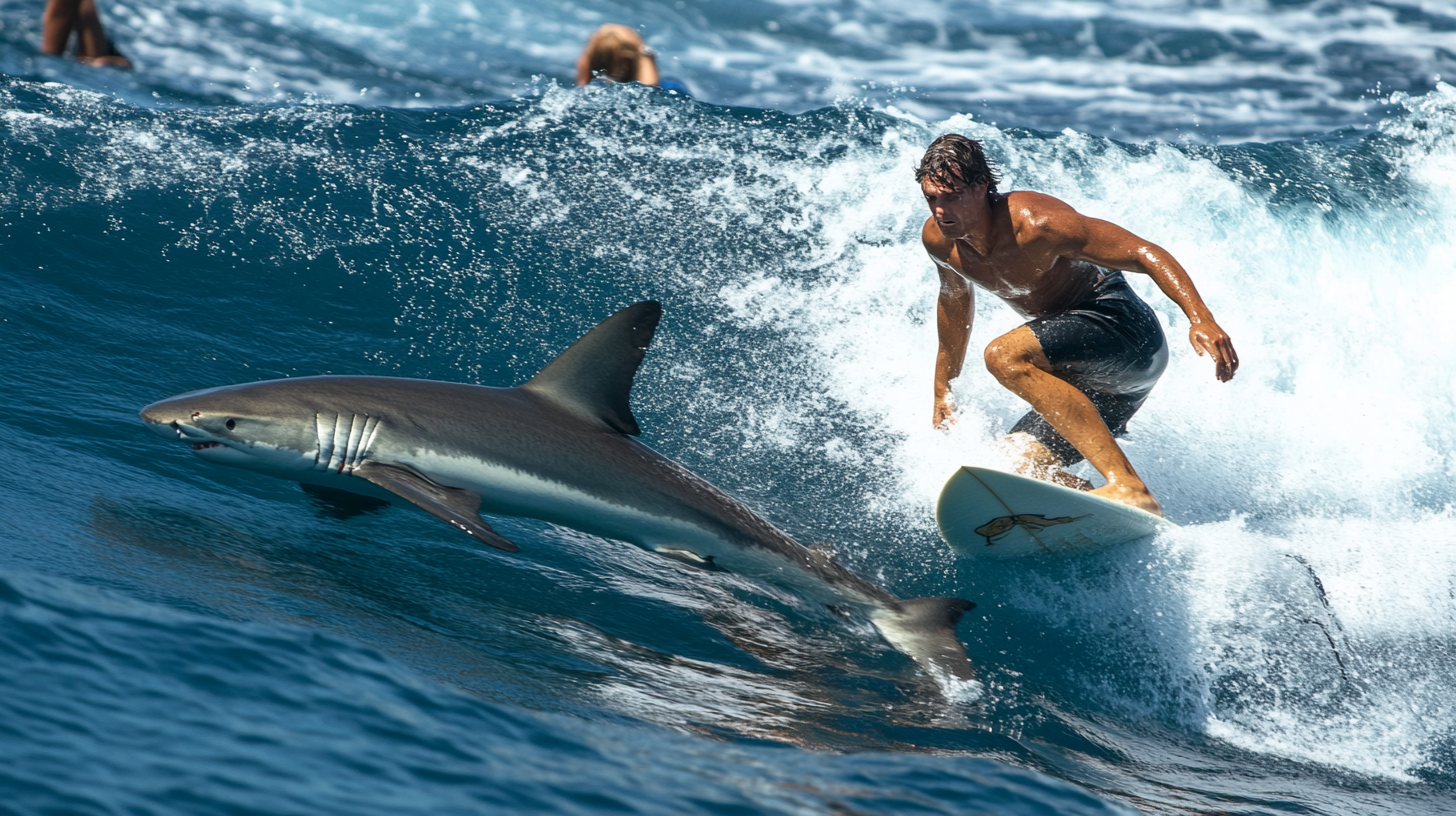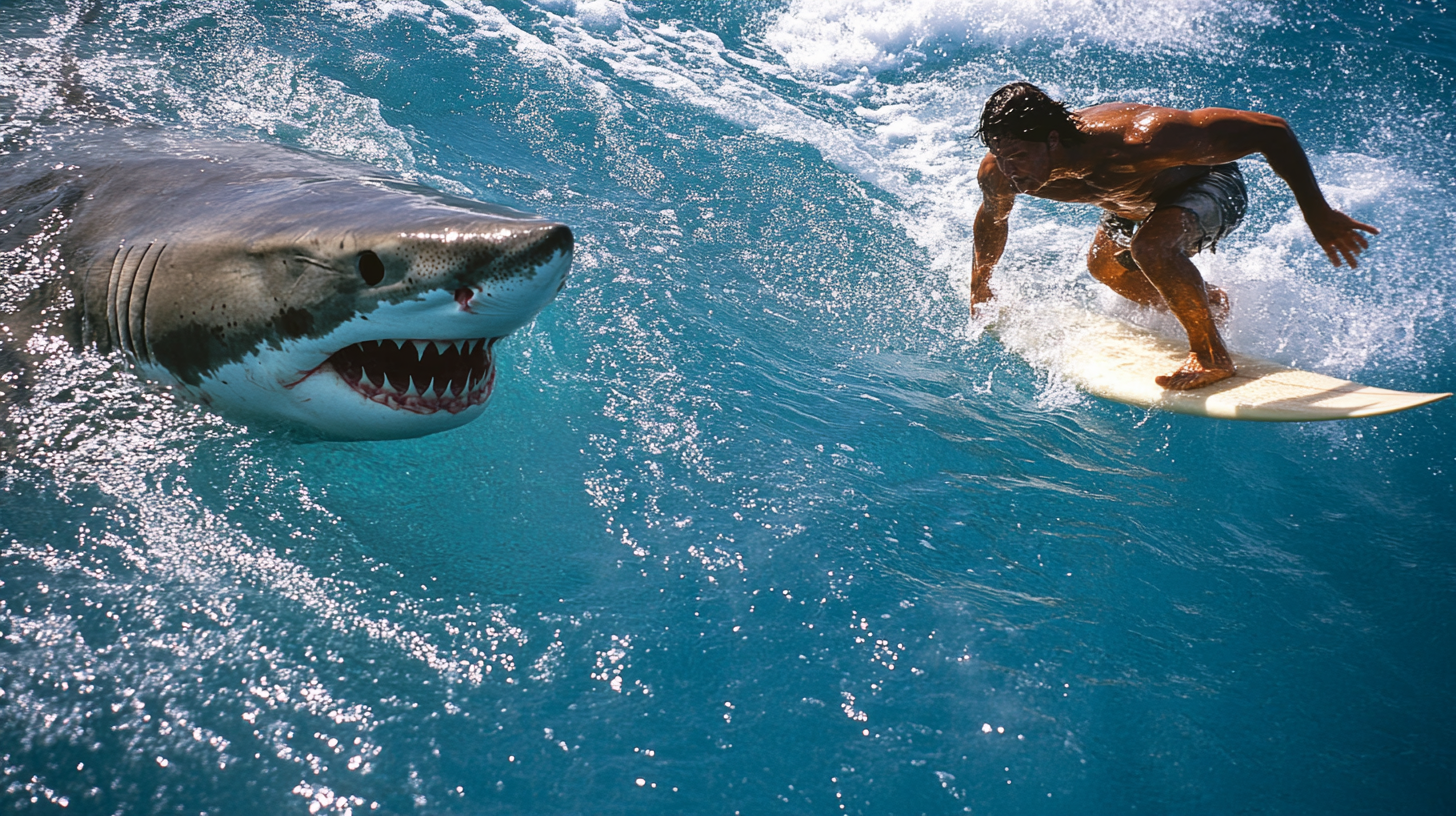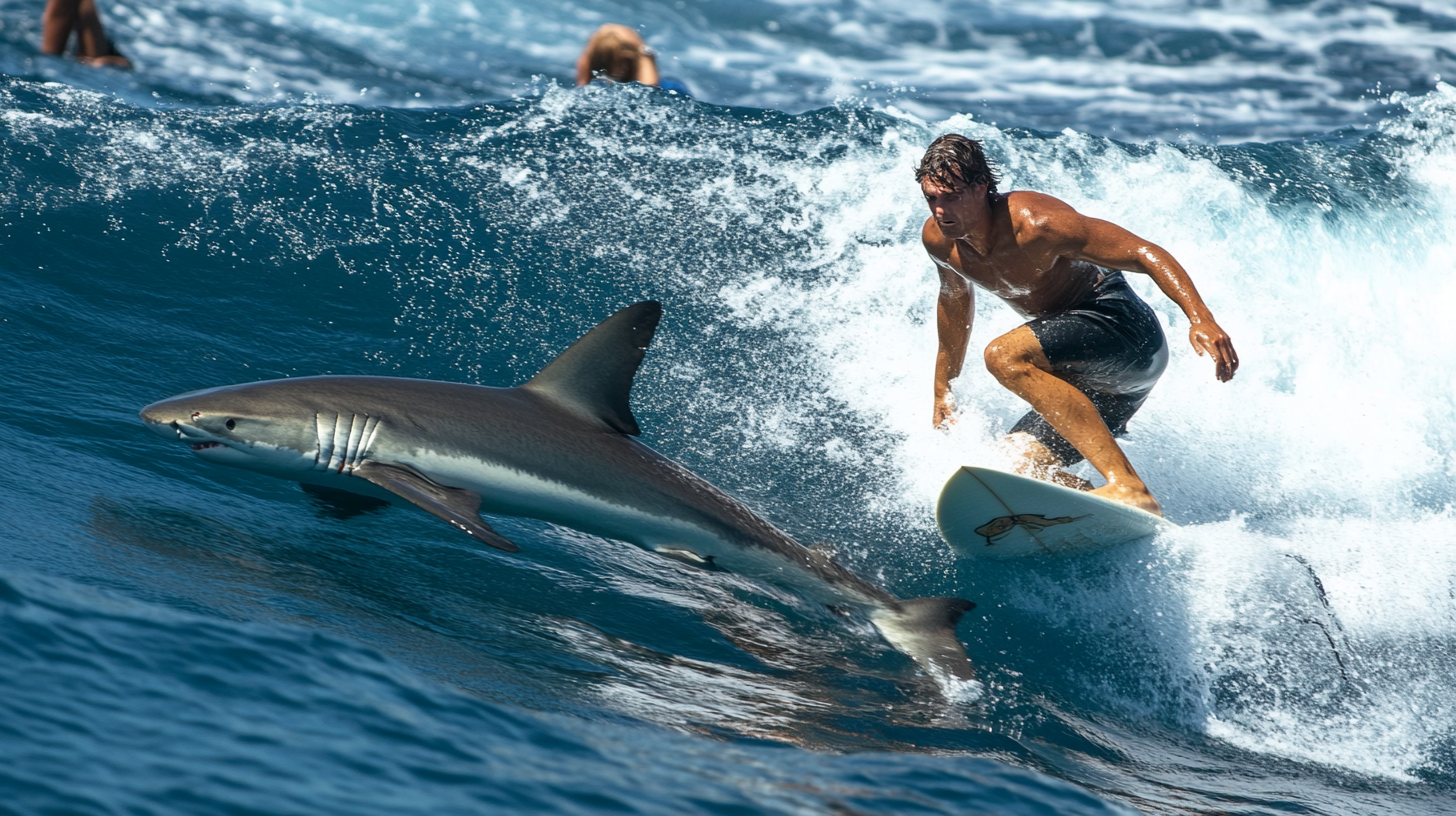

surfer’s injury and immediate response
The 61-year-old surfer, a seasoned veteran of the waves, found himself in a life-threatening situation when he was struck by his own board during a routine surf session. The impact left him with a severe injury, causing intense pain and limiting his mobility. Despite the shock and the immediate physical toll, his instincts kicked in. He quickly assessed the situation, realising the seriousness of his condition but also understanding that panic would only make things worse.
With years of experience in the water, he knew that staying calm was crucial. He took a moment to steady his breathing, despite the pain, and began to plan his next move. The injury had left him vulnerable, but his knowledge of the ocean and his mental fortitude allowed him to focus on survival. Rather than waiting for help, which could take too long, he made the decision to swim back to shore on his own, knowing that every second counted.
His immediate response to the injury was a testament to his resilience and experience. While many might have succumbed to fear or shock, he remained composed, understanding that his best chance of survival lay in his ability to stay focused and act quickly.
the challenging swim to safety
The swim back to shore was nothing short of gruelling. With the injury severely limiting his movement, every stroke was a battle against both the pain and the powerful ocean currents. The waves, which had once been a source of joy and freedom, now posed a significant threat. Each swell pushed him off course, forcing him to constantly readjust his direction. Despite the odds, he remained determined, knowing that giving up was not an option.
His years of experience in the water proved invaluable during this critical moment. He understood how to conserve his energy, using the natural rhythm of the ocean to his advantage. Instead of fighting the waves head-on, he timed his strokes to coincide with the lulls between sets, allowing the water to carry him closer to shore. His breathing, though laboured from the pain, remained controlled, a skill honed over decades of surfing in challenging conditions.
As he swam, the distance to the shore seemed to stretch endlessly. The injury made it difficult to maintain a steady pace, and there were moments when the pain became almost unbearable. But each time he felt his strength waning, he reminded himself of the importance of staying focused. He visualised the shoreline, the safety it represented, and the people waiting for him. This mental imagery kept him going, stroke after stroke, even as his body screamed for relief.
Eventually, after what felt like an eternity, he began to feel the ocean floor beneath him. The relief was immense, but the journey was not over yet. The final stretch required him to navigate the shallow waters, where the waves broke with more force. With his injury making it difficult to stand, he crawled through the surf, using his arms to drag himself forward. Each movement was excruciating, but the sight of the shore so close kept him pushing forward.
By the time he reached the sand, he was utterly exhausted, his body battered and bruised. But he had made it. Against all odds, he had managed to swim back to safety, a testament to his resilience, experience, and sheer willpower.
medical attention and recovery
Once on shore, the severity of the surfer’s injury became even more apparent. Bystanders quickly rushed to his aid, calling for emergency services while offering what little assistance they could. Despite his exhaustion and the intense pain, the surfer remained conscious, communicating with those around him and providing details about his condition. His calm demeanour, even in the face of such adversity, was remarkable and helped those assisting him to stay composed as well.
Paramedics arrived swiftly, assessing the extent of his injuries. It was clear that he had sustained significant trauma, and immediate medical intervention was necessary. He was stabilised on the beach before being transported to the nearest hospital for further evaluation. The journey to the hospital was a blur for the surfer, his body finally succumbing to the exhaustion and pain he had been holding at bay during his swim to safety.
At the hospital, doctors confirmed that the injury was more severe than initially thought. The impact from the surfboard had caused deep tissue damage, and there were concerns about potential fractures. He was immediately taken in for scans and tests to determine the full extent of the damage. Fortunately, despite the seriousness of the injury, there were no life-threatening complications, and surgery was not required. However, the road to recovery would be long and challenging.
In the days following the incident, the surfer remained in hospital under close observation. His resilience, which had carried him through the ordeal in the water, now became crucial in his recovery process. Physical therapy was introduced early on to help him regain mobility and strength. The medical team was impressed by his determination, noting that his fitness and mental toughness, honed over years of surfing, were key factors in his ability to recover more quickly than expected.
Though the injury had temporarily sidelined him, the surfer remained optimistic. He spoke of his desire to return to the waves as soon as possible, though he understood the importance of allowing his body the time it needed to heal. His recovery was not just physical but also mental, as he processed the trauma of the incident and the close call he had experienced. Yet, his love for the ocean remained undiminished, and he was already planning his return to the surf once fully healed.
As weeks turned into months, the surfer’s condition steadily improved. Regular physiotherapy sessions helped him regain strength in the affected areas, and his mobility gradually returned. His progress was a testament to his discipline and the support of his medical team. By the time he was cleared to return to the water, he had not only recovered physically but had also gained a deeper appreciation for the resilience of the human body and spirit.
surfer’s injury and immediate response
It was a typical day out on the water for the 61-year-old surfer, until it wasn’t. One moment he was riding the waves, the next, he found himself in a world of pain. A sudden impact left him with a serious injury—one that would have sent most people into shock. But not this bloke. Instead of panicking, he assessed the situation like a seasoned pro. He knew he was in trouble, but he wasn’t about to let that stop him.
With the injury taking its toll, he quickly realised that staying out in the water wasn’t an option. His body was battered, but his mind was sharp. He took a deep breath, gathered his strength, and made the decision to head back to shore. It wasn’t going to be easy, but if there’s one thing surfers know, it’s how to keep calm under pressure. After all, when you’ve spent decades dodging sharks and wiping out on some of Australia’s gnarliest waves, a little injury isn’t going to scare you off.
His immediate response was nothing short of remarkable. Instead of giving in to the pain, he focused on survival. He knew that every second counted, and he wasn’t about to waste any of them. With the kind of grit that only comes from years of experience, he prepared himself for the long, painful journey back to shore.
the journey back to shore
The swim back to shore was nothing short of a battle. With every stroke, the pain surged through his body, but he wasn’t about to let that stop him. The ocean, usually his playground, had turned into a relentless adversary. Each wave seemed to push him further from safety, but he kept going, one arm after the other, like a man on a mission. He knew the coastline like the back of his hand, and that knowledge gave him a sense of direction, even when his body was screaming for him to stop.
It wasn’t just the physical pain he had to contend with. The mental game was just as tough. Out there, alone in the water, it’s easy for doubt to creep in. But this wasn’t his first rodeo. Years of surfing had taught him how to stay calm, even when things went sideways. He focused on his breathing, keeping it steady, and reminded himself that the shore wasn’t as far as it seemed. He’d been in tight spots before, and he wasn’t about to let this one get the better of him.
As he got closer to shore, the waves grew more intense, crashing against him with a force that would have knocked most people off their game. But not this bloke. He used the waves to his advantage, timing his strokes with the swell to conserve energy. It was a delicate balance—too much effort, and he’d burn out; too little, and he’d be swept back out to sea. But after decades of riding waves, he knew how to read the ocean like a book.
After what felt like an eternity, he could see the beach. The sight of the sand gave him a second wind. His arms were heavy, his body was aching, but he wasn’t about to give up now. With one last push, he rode a wave in, letting it carry him the final few metres to safety. He collapsed onto the shore, exhausted but alive. The ocean had thrown everything it had at him, but he’d made it back. And in true Aussie fashion, he’d done it with a quiet determination that only comes from years of experience and a love for the sea.

